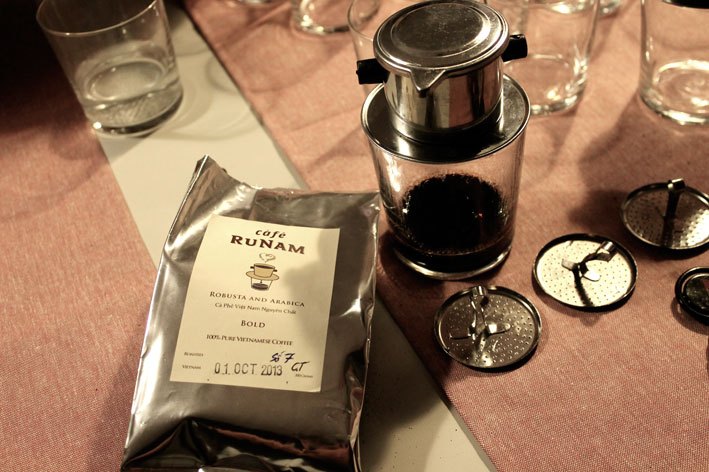For Italians, coffee is the object of national pride, but we are not the only ones unrestrained in its use, and nor are we the only ones who know how to make it. Unexpectedly, last night at the Appartamento Milan Brera, thanks to a lesson in Vietnamese coffee by friends from the RuNam Cafè, we discovered that Vietnam also has a coffee tradition, and it is no less intense than the Italian one.

And we learned many interesting things, like the fact that since 2012 Vietnam has been the main exporter of Robusta coffee, and even topped Brazil, more focused on the Arabica blend. And that coffee is the second commodity in the world, after oil.
But that this that surprised us the most is the ritual of Vietnamese coffee, which, a little like tea for the Japanese, is prepared and enjoyed slowly, very slowly. For that matter, RuNam is an expression that mean Ru – stream, litany, lifeline – and Nam – Vietnamese spirit – and perfectly expresses the Vietnamese philosophy according to which enjoyment of coffee requires a comfortable setting, good conversation and above all time, since the little cup fills up one drop at a time.
Mr Khanh, the owner of RuNam Cafè, explained to us that, like in Italy, coffee is the main drink in his country. A culture that was lost after the Vietnam War and is now re-emerging. His aim is in fact to reappropriate this tradition.
What do you need for a Vietnamese coffee? It takes very little, really: 25 g ground coffee (around two and a half teaspoons), boiling water, a Vietnamese filter, a measuring cup, a large container for keeping the coffee hot, a few coffee cups (since coffee is best enjoyed in company) and a pretty tray for serving it.
But you also need a lot of time. This is how it is done:
1_Prepare the filter and maintain the coffee cup at the desired temperature
Put both the filter and the cup in the large container, pour boiling water through the filter, to clean everything thoroughly, and let the water drain. At this point, pour 25 g of ground coffee into the filter and gently shake to evenly distribute the coffee.
2_Expand the coffee
Pour boiling water into the cup and put the filter, full of coffee, above the cup in order to help the coffee
in the filter expand. Pour 25 ml of boiling water in the filter, slowing and with a circular movement to help prevent clumps and make any clumps that do form dissolve immediately. Cover the filter and keep cover for 40-45 seconds, until all of the water is absorbed.
3_Press and filter the coffee
After about 45 seconds, the coffee will have expanded to fill about 3/4 of the filter. Use the regulator to gently press the coffee grounds until a small amount of water comes out of the regulator. Pour the water into the cup. Put the filter in an empty cup and very slowly add 70 ml of boiling water in a circular movement. After a few seconds, raise the regulator and pull it back and replace the cover. The coffee will begin to filter into the cup and will be ready after between 5 and 6 minutes. Once the coffee is ready, clean the filter. Move the filter to the small bowl and pour hot water over it, in order to keep it hot until it is time to make the next cup of coffee. Serve the coffee on a tray, not forgetting sugar, condensed milk, ice, biscuits and whatever else you like with your coffee.
It is a long, fascinating process that inspires us to take life slowly, savouring every moment and tasting it thoroughly.










 Picture
Picture













